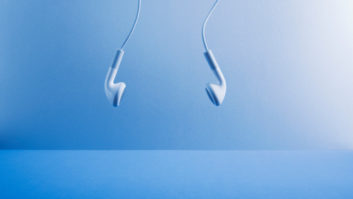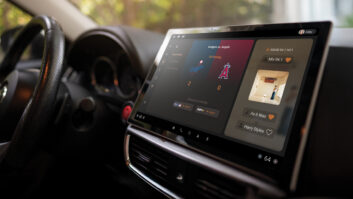It’s a poorly kept secret that Nielsen is considering an important change in how it measures radio listening. Now one commercial radio advocate says the change could result in an increase in reported listening levels of 24% in Portable People Meter markets and +10% nationally.
Pierre Bouvard, chief insights officer of the Audio Active Group at Cumulus Media/Westwood One, writes on his blog that Nielsen, in private meetings with customers, has discussed potential plans to tweak the way it generates average quarter-hour audiences in the 48 markets that use PPM. Consultant Fred Jacobs also has written about this, as has blogger Jerry Del Colliano.
Nielsen is considering shaving two minutes off the time required for a station to garner credit for an average quarter hour (AQH) of listening. A three-minute threshold instead of five would qualify more listening to be counted for measurement purposes.
In fact, that could mean that AM/FM radio listenership would surpass TV in 25–54 average audience ratings, according to Bouvard, and widen its ratings lead over linear TV among 18–49s by 47%.
He thinks the implications for radio would be profound: The trend of radio listening surpassing TV would accelerate; 2025 post-buy analyses would overachieve 2024 media plans; and AM/FM radio would experience “reach” growth in advertising schedules. He believes radio ads could also become more effective as stations increase the number of commercial breaks with shorter durations.
“Since the introduction of the Portable People Meter, most AM/FM radio stations schedule their two commercial breaks around :15 and :45 past the hour. This strategy was designed to maximize five-minute listening durations,” he wrote.
With a three-minute quarter-hour qualification, stations could create more breaks of shorter duration, which he thinks will significantly benefit advertisers. He cited data showing that two-minute ad breaks retain 99% of the lead-in audience. Six-minute ad breaks retain 85% of the lead-in audience.

The cut from five to three minutes in the Nielsen AQH requirement is important, he says, considering that recent analysis of PPM tuning revealed nearly a quarter of listening occasions are three or four minutes. “Under the current edit rules, none of that listening is credited. Nielsen indicates this listening should be included in PPM market reporting,” he wrote.
Nielsen recently reprocessed all 48 of the May 2024 PPM markets, comparing the listening estimates based on the existing five-minute edit rule and the proposed three-minute edit rule. Overall, most of the 24% growth in listening would be due to growth in time spent listening, but reach would be up by mid-single digits in all demographics.
In a video accompanying the blog Bouvard said the change in how Nielsen tabulates listenership would mean a 19% increase in weekly time spent listening and a 4% weekly cume increase.
A projection by Scott Anekstein, VP of research at Westwood One, shows Nielsen Nationwide AQH for AM/FM radio will increase 9% to 10% in 2025 due to the effect of the switch.
Network radio advertisers transact on Nielsen’s national audience service called “Nielsen Nationwide.” Anekstein conducted a national AQH projection using the uplifted PPM markets and the existing diary markets. (PPM metro markets represent about a third of total U.S. population.)
It’s possible some stations will see wider growth in reported listenership levels depending on the format. “Spanish tropical, hot adult contemporary, rhythmic contemporary hit radio and urban contemporary will show the greatest potential average quarter-hour audience growth,” according to Bouvard’s blog.






